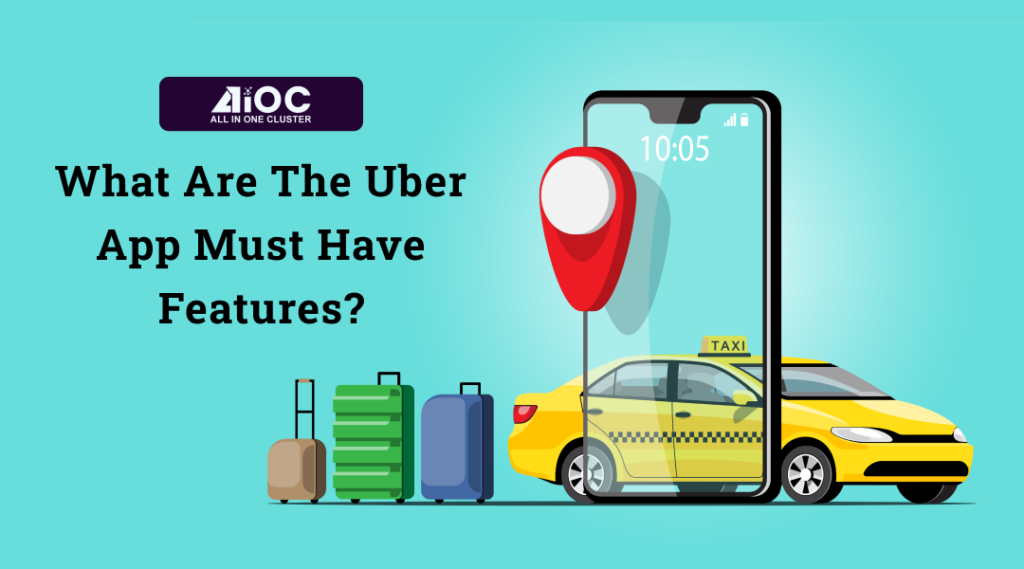Uber sparked a revolution by pioneering a new trend in on-demand cab booking, inspiring many others to create clone apps. Uber’s popularity is largely due to its user-friendly interface and straightforward application. Uber faced numerous challenges, one of which is the need to attract both riders and drivers.
The Uber app is made with a unique features that includes some beneficial suggestions. It also draws attention to the merchandise. So, if you want to make an Uber clone app, you should focus on the technical aspects and use the app since it is user-friendly.
Uber Clone app development is one of the most profitable internet enterprises, and it may be utilised to produce a white-label app. Clients can hire programmers and designers.
The Important Features of the Uber App are:
Maps and Location Services:
Users can give the cab drivers the liability to find the exact location in order to find a taxi and allows the power of GPS monitoring and google maps can be used to assess what is precisely there on the globe. By not having the critical taxi app feature a driver will require directions from the passenger on phone. Therefore google maps help drivers to navigate easily and navigate all roads.
In-application Payments:
The app payment is a key features of the Uber app and does not have to be in physical form because the uber in-app payment system makes the process of payment very smooth. The Uber services must be an easy and full payment gateway. The integrated payment systems help ease the process of payments. Also, technology integration leads to further ease and better customer experience.
Built-in Fare Collection:
The drivers must make the payment without paying money in cash deposition. Instead, the best way is to enable the same and ask drivers to sign up for a contract and then pick a billing period. There is also no need for manual documentation according to an app that lets the driver pay from the collection of own helps eliminate human contact between administration and drivers.
Payment and Profile Authorization:
The app needs to allow profiles created by users to authorize and enable making legal online payments for every ride taken as to electronic payments without authorization. The driver’s information such as license number, registration number and contact details. It also helps store passengers’ information and uses them to predict their destination.
Contact Channel:
By creating a contact channel the customers can get notified about various deals that offer by taxi booking apps. Also, push notifications or pick-in-app updates are there for customers that help them stay updated.
Fare Calculator:
The consumer frustration is reduced if the rate card is made available in the app. Putting up the fare calculator in an app would mean higher satisfaction and better reviews of the app. It is also a great way to help passengers consider the fees of the fare calculator as it will help extract the payment before taking rides up.
Intelligent Analytics System:
There is also a need to improve business and monitor taxi app business works so by integrating an analytics system will help track daily requests, reservation sources and missing requests to help border away taxi app booking system. Hence ensure taking data-backed decisions by supporting the right data analytics system.
Enabling Co-passengers and Real-time Ride Sharing:
The ride-sharing function is a true way to win the user’s trust. The idea is that it will let someone else keep eye on the driver’s route and give information regarding whether the passenger has arrived home safely or not. Sharing the details will help give an understanding of whether or not the driver’s route is correct and also share ride details.
Multiple Drop-off Points:
Enabling the user to pick up various drop-off points on the app help facilitate the driving and users can book a trip and make sure they add several stops to the path of the driver by allowing users to add the same drop location.
Ratings:
A successful Uber-like app has the mechanism to review the rates charged by driver, car, route and even behaviour of the driver. The app needs to be tested and checked that will help passengers get honest ratings. This will lead to better operations and also give a better understanding of the business flaws.
Ride Booking History:
It is important to make sure that users save the history of their trip and that it be included in the driver app. It will also help to check the details of the trip if necessary. The driver also tracks the income and history of the journey. It will help utilize it as a guide and in case resolve problems related to the discrepancy between payment and no of trips.
Keeping Favorite Destination:
The users can pick the same destinations in the future and save their goals instead of typing the same destination again. This also allows booking the taxi app and planning the journeys rapidly.
Conclusion:
Uber is an on-demand ride-sharing app that has transformed the business world, and many other industries are now attempting to replicate the in-demand business model. Startups and entrepreneurs see it as a fantastic opportunity to create an Uber-like app. The popularity of uber app among customers has prompted the development of various new taxi apps and rental businesses.
The vogue of using Uber-like apps has reached the market at the perfect time and performs well like Uber, allowing anyone to quickly obtain an app from a competent mobile app development firm. It is possible to identify company objectives and goals with desired outcomes by conducting research. Also, Uber was successful since no other company had introduced a similar cab-hailing service at the time of its inception. However, today these services are commonplace and have created a new business by having a large-scale influence.
